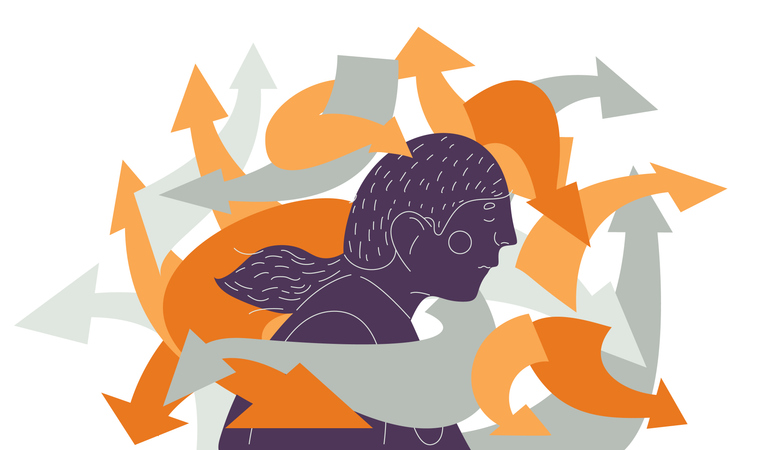When Autism and ADHD Occur Together
Attention deficit/hyperactivity disorder (ADHD) and autism spectrum disorder (ASD) are neurodevelopmental disorders. Both affect brain development. These two conditions frequently occur together. An individual may be diagnosed with both conditions or may have one diagnosis with some characteristics of the other condition. The co-occurrence of ADHD and autism is sometimes known as AuDHD.
One recent study of preschool and school-age children found that among children with ADHD, 33% also had autism. Among children with autism, 10% also had ADHD. The researchers found that input from both parents and teachers was important to early identification and suggest that early and more accurate identification will allow for more effective educational and clinical interventions and lead to better quality of life for these individuals. They also found that only 16% of children with autism and ADHD had been previously diagnosed with both conditions. (Canals, 2024)
In addition, a meta-analysis of more than 50 studies found that among people with autism, 39% also had ADHD. (Ying, 2021)

Similarities and Differences
ADHD and autism share a number of characteristics. Both:
- Are neurodevelopmental disorders that affect brain function.
- Can cause difficulties with attention, focus, and impulsivity.
- Can lead to social communication challenges.
- Impact the brain’s executive functioning.
(Executive functioning is a set of mental skills, including working memory, flexible thinking, and self-control. Difficulties with executive function can make it hard to focus, make decisions, handle emotions, and other challenges.)
The two conditions also have a number of opposing traits. For example, people with autism often focus on routines and sameness and may have difficulty transitioning or changing activities, while people with ADHD may be easily distracted and bored and look for new and different experiences. A person with ADHD may seek out constant stimulation and novelty while a person with autism may be easily overstimulated or sensitive to sensory input (sounds, lighting). Some examples of possible conflicting symptoms in a person with AuDHD include:
- Being easily overwhelmed but feeling unable to slow down and recharge.
- Struggling between preference for routines and boredom with sameness.
- Craving social stimulation but finding it hard to navigate social situations.
Experiences of AuDHD
Below are some perspectives from individuals living with both ADHD and autism. (Reported in ADDitude magazine, 2024.)
“Autism makes me an extreme rule follower. When ADHD impulsivity comes into play, it makes me angry with myself because I’ve ‘broken a rule.’ Both can play into agoraphobia and social interaction; At any point, I am either trying to either blend into the wall or thinking about how abnormal I am even as I try to chat and sound normal.” — Sandy, Massachusetts
“The biggest challenge with autism is spending lots of time figuring out what everyone means or why they behave in certain ways and how I’m meant to respond. Combined with ADHD and trying to get through the day with the jumble in my head and a brain that never stops, I’m exhausted a lot of the time. Exercise really helps. I’ve given up wanting or needing others to understand me. — An ADDitude Reader
“Both disorders cause me to miss social cues or misunderstand them. It’s likely why I constantly overshare. I am incredibly fidgety and stim all the time. I am always looking for some kind of dopamine-producing situation, so I’m easily distracted and/or bored and I hyperfocus a lot.” — Jordan, California
“I often feel like a living contradiction. I want order but cannot maintain it. I want to be systematic and precise but struggle with it, which leaves me constantly feeling not good enough (to my own standards) and like I can never quite ‘get there.’” — Samantha, Australia
“Sometimes my traits are in conflict, like wanting to take my time and be perfect but not having the attention span to do so. My ADHD brain signs me up for more than my autistic brain can deliver at times and vice versa.” — Dan, Australia
Treatment and Support
ADHD is typically treated with medication, sometimes in combination with therapy. There are a number of FDA-approved medications for ADHD for children and adults. (More on ADHD treatment.) A variety of interventions, therapies and supports are used to help individuals with autism. (More on autism treatment.) Just as each individual’s experiences of the conditions and symptoms differs, their needs for support and treatment differs also.
References
- Sample, I. The truth about ADHD and autism: how many people have it, what causes it, and why are diagnoses soaring? The Guardian, June 1, 2024.
- Ying R., et al. 2021. Prevalence of attention-deficit/hyperactivity disorder in individuals with autism spectrum disorder: A meta-analysis. Research in Autism Spectrum Disorders, Volume 83, 2021.
- May, T. What is AuDHD? 5 important things to know when someone has both autism and ADHD. The Conversation. July 9, 2024
- Children and Adults with Attention-Deficit/Hyperactivity Disorder (CHADD). ADHD and Autism Spectrum Disorder
- Blake, M. “AuDHD”: What does it mean to have both ADHD and autism? Medical News Today. Oct 21, 2024.
